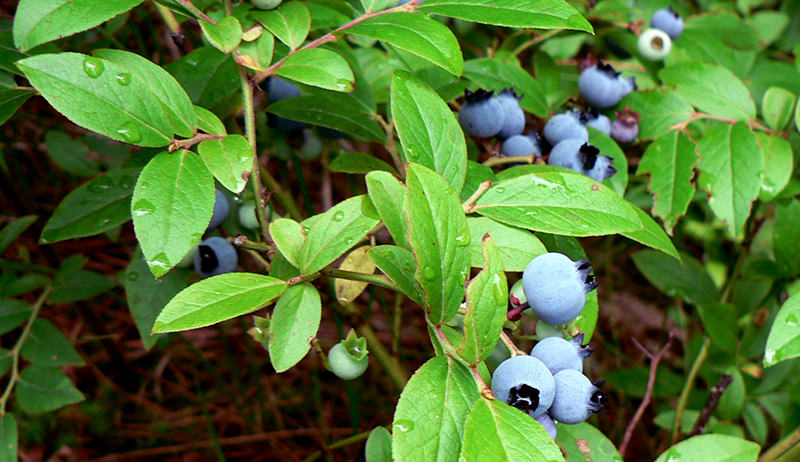
This is the time of year that I start to think about foraging. Spring planting is mostly done, and while the veggie and fruit harvests of the fall are still far off, that doesn’t mean there’s nothing around to eat. There are so many valuable edibles you can forage year-round, and a good place to start is with plants that make tasty teas.
Making A Foraged Iced Tea
To make a basic iced tea, heat one quart of water to nearly boiling and place in a glass jar. Add approximately 1/2 to 1 cup of fresh herbs or 1/4 to 1/2 cup of dried herbs, and cover. The amount is pretty much totally dependent on the herbs you’re using and your personal tastes. Steep for anywhere from 30 minutes to 4 hours—the longer the steep, the stronger the tea. Strain and put on ice, adding a little honey if desired. (Hot tea can be made the same way—just reheat after straining.)
To make teas with fruit, simply smash the fruits to a pulp and follow the same method as you would with leafy herbs. You can strain out the fruit or leave it in, though with something like rose hips, you’ll want to remove the seeds before you steep to avoid bitterness. You can always add honey, cinnamon or even vanilla to make your tea sweeter. Remember, we want these teas to appeal to even the youngest in our families, so they can develop a healthy relationship with foraged foods.
If you have an herb garden, be sure to experiment with mixing your herbs with your foraged plants (many of which are also herbs) to find that flavors you like the best.
Tasty Tea Herbs & Fruits
Here are a few single foraged teas suggestions, as well as a few combinations that might appeal to you. Bloom/fruit times will vary from region to region, but I tried to select plants that are available in much of the North America.
Beebalm Tea

Monarda (aka beebalm or wild bergamot) is a member of the mint family and has a spicy mint flavor. Both the leaves and the flowers can be used for tea. Although beebalm is a medicinal herb and was used by pioneers and Native Americans alike to treat fevers and colds, the flavor is divine, and it pairs nicely with other foraged tea plants on this list.
Kelly Kindscher writes in her book, Medicinal Wild Plants of the Prairie (University Press of Kansas, 1992):
“A handsome ornamental, beebalm is an easy plant to grow in the garden. Melvin Gilmore believed that beebalm was inadvertently propagated by Indians of the Missouri River region, who used it widely and spread its seeds when they transported the plants after harvesting them.”
Lemon Balm Tea

Lemon balm is another mint-family plant that make a fantastic tea. Try pairing lemon balm leaves with any wild fruit you find or even with a cultivated flower like hibiscus.
Pineapple Weed

Pineapple weed (aka wild chamomile) is a delight each spring and will take you on into summer. You’ll be able to smell its sweet fragrance on the breeze for months. This one pairs nicely with red clover blossoms, which bloom at the same time.
Wild Strawberry

Wild strawberry is an obvious friend of the forager, and fruit teas are simply delectable—what kid doesn’t like jam in his tea, right? According to Lesley Bremness, author of The Complete Book of Herbs (Viking Studio Books, 1994), wild strawberry is full of iron, a mild laxative and can be consumed as a tea to cool fevers. But you can just drink strawberry tea (including the leaves) for its yummy flavor.
Blueberry, Huckleberry & Bilberry

These berries are all very similar and all delicious, though some are tart and can benefit from a bit of honey at times. Samuel Thayer, a renowned forager and author of Nature’s Garden (Forager’s Harvest Press, 2010), gives a charming account of picking a 3½-gallon tub of these berries on one overnight excursion. Suffice it to say, these will make a lovely tea or even jam.
Raspberry & Blackberry

Both leaf and berry of each plant is sweet and can be brewed together or apart. The leaves pair well with fennel or caraway and a bit of maple or molasses. Use fruity leaves like raspberry, blackberry and strawberry with other forages, like elder flower or even citrus peel, which can be foraged if you have the right climate or purchased and preserved otherwise. Other fruit teas can be made from wild cherries, persimmons, pawpaws, mulberry and elderberry.
Foraging Safety
As you forage, take only responsible amounts—your harvests can be dried and enjoyed year-round. And remember, foraging with your family can take more concentration (just like doing anything else with kids). Before you pick anything— and certainly before you ingest anything—make sure you double and triple check that the plant is safe to eat. A good field guide is indispensable, but if you have a local foraging mentor, having someone with you is the best!




